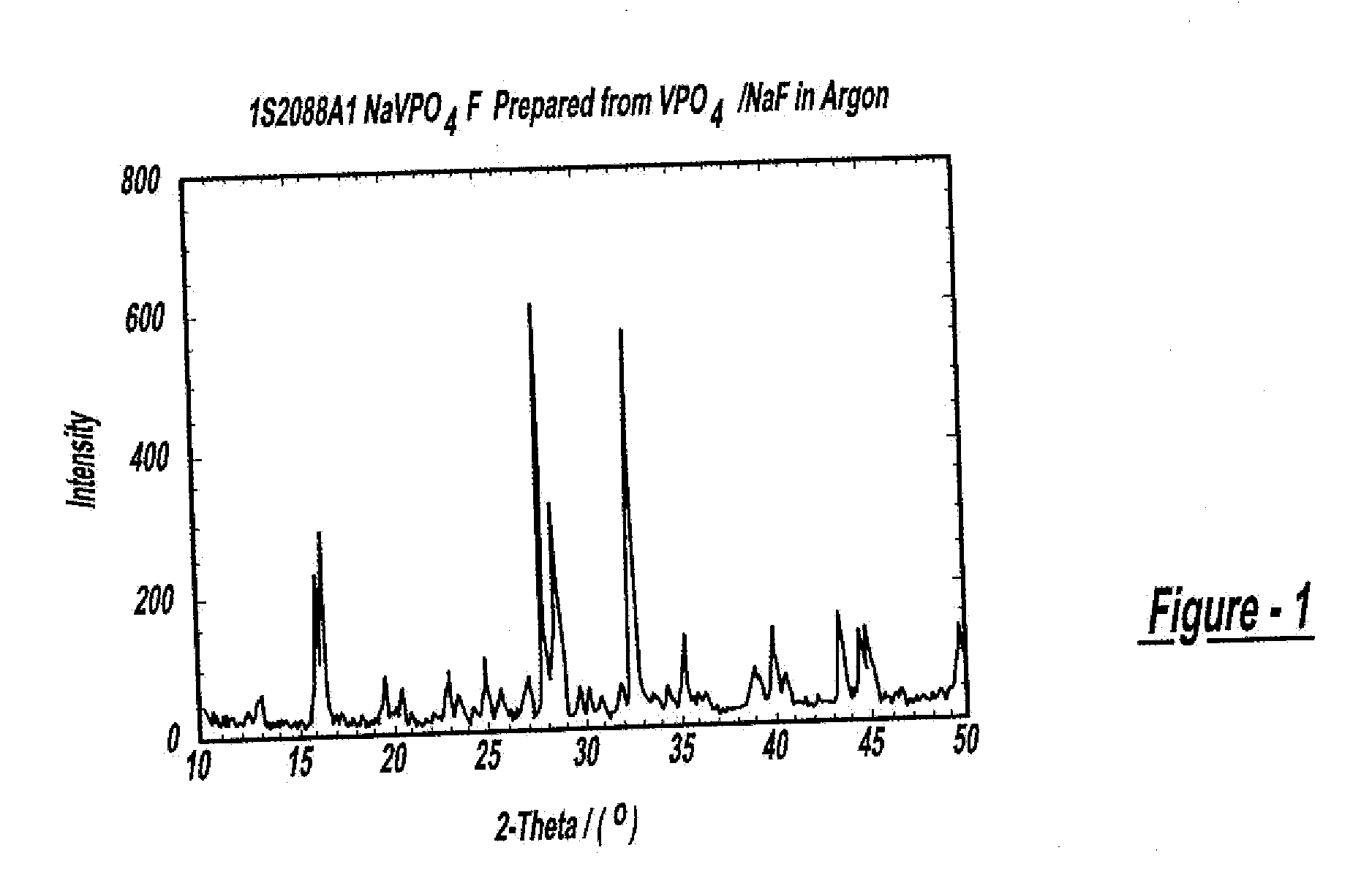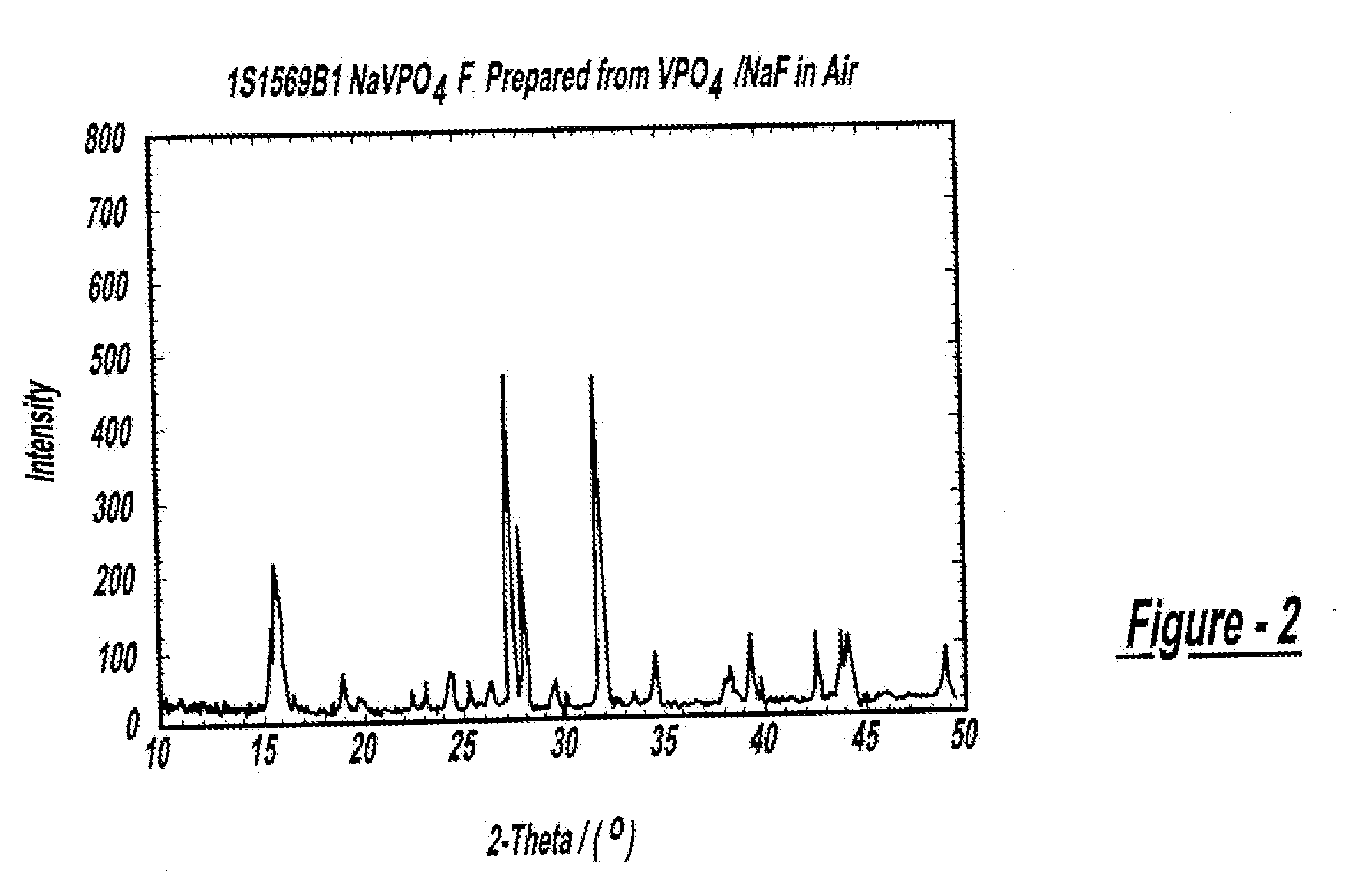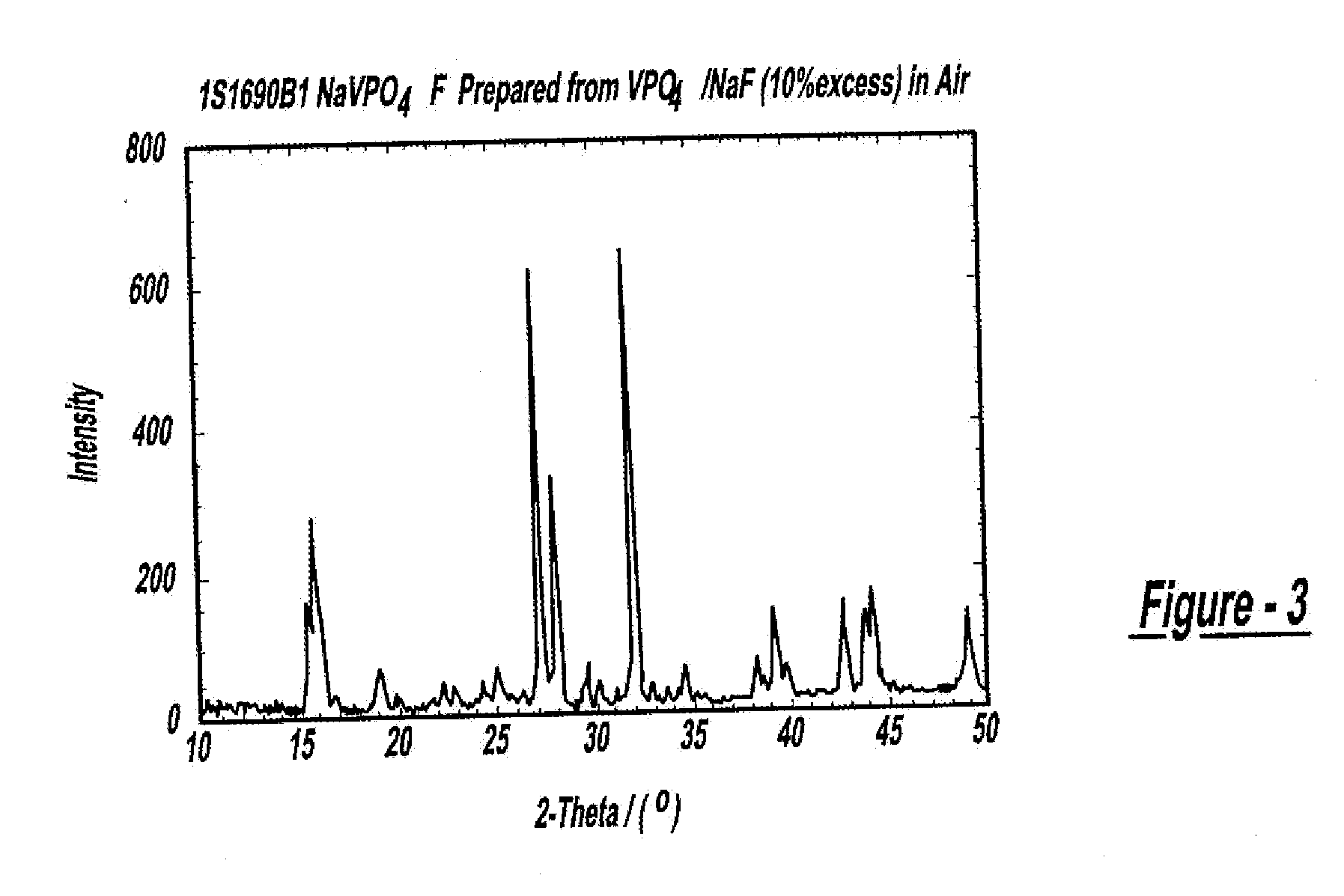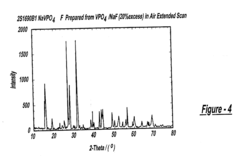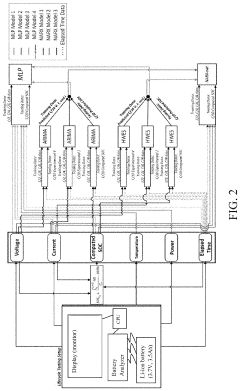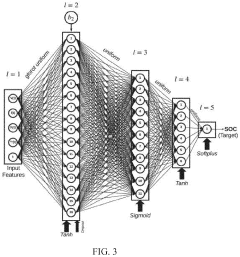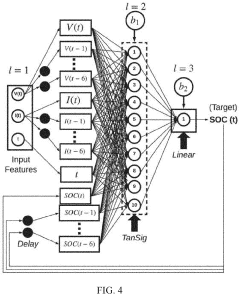How Sodium Ion Batteries Advance Renewable Energy Forecasting Systems
AUG 7, 20259 MIN READ
Generate Your Research Report Instantly with AI Agent
Patsnap Eureka helps you evaluate technical feasibility & market potential.
SIB Tech Background
Sodium-ion batteries (SIBs) have emerged as a promising alternative to lithium-ion batteries in recent years, particularly in the context of renewable energy systems. The development of SIBs can be traced back to the 1980s, but significant advancements have been made in the past decade, driven by the need for more sustainable and cost-effective energy storage solutions.
The primary motivation behind SIB technology is to address the limitations of lithium-ion batteries, including the scarcity and high cost of lithium resources, as well as safety concerns. Sodium, being abundant and widely distributed globally, offers a more sustainable option for large-scale energy storage applications. This aligns well with the growing demand for efficient and reliable energy storage systems in renewable energy forecasting and grid integration.
SIB technology has evolved through several key stages. Initially, research focused on identifying suitable electrode materials and electrolytes compatible with sodium ions. Early prototypes faced challenges such as low energy density and poor cycle life. However, breakthroughs in cathode materials, including layered oxides and polyanionic compounds, have significantly improved the performance of SIBs.
The development of hard carbon anodes marked a crucial milestone in SIB technology, providing a viable alternative to graphite anodes used in lithium-ion batteries. This innovation addressed issues related to sodium intercalation and improved the overall stability of the battery system. Subsequent research has explored various nanostructured materials and composites to enhance the electrochemical properties of SIB electrodes.
In recent years, the focus has shifted towards optimizing the electrolyte composition and developing advanced separator materials to improve the safety and longevity of SIBs. Efforts have also been made to scale up production processes and develop manufacturing techniques suitable for commercial applications.
The integration of SIBs with renewable energy forecasting systems represents a new frontier in energy management. These batteries offer unique advantages in grid-scale storage applications, including their ability to operate efficiently at room temperature and their potential for rapid charging and discharging. This makes them particularly suitable for balancing the intermittent nature of renewable energy sources such as solar and wind power.
As research continues, the goal is to further improve the energy density, cycle life, and overall performance of SIBs to make them competitive with lithium-ion batteries in a wider range of applications. The ongoing development of SIB technology is expected to play a crucial role in advancing renewable energy forecasting systems and supporting the transition to a more sustainable energy infrastructure.
The primary motivation behind SIB technology is to address the limitations of lithium-ion batteries, including the scarcity and high cost of lithium resources, as well as safety concerns. Sodium, being abundant and widely distributed globally, offers a more sustainable option for large-scale energy storage applications. This aligns well with the growing demand for efficient and reliable energy storage systems in renewable energy forecasting and grid integration.
SIB technology has evolved through several key stages. Initially, research focused on identifying suitable electrode materials and electrolytes compatible with sodium ions. Early prototypes faced challenges such as low energy density and poor cycle life. However, breakthroughs in cathode materials, including layered oxides and polyanionic compounds, have significantly improved the performance of SIBs.
The development of hard carbon anodes marked a crucial milestone in SIB technology, providing a viable alternative to graphite anodes used in lithium-ion batteries. This innovation addressed issues related to sodium intercalation and improved the overall stability of the battery system. Subsequent research has explored various nanostructured materials and composites to enhance the electrochemical properties of SIB electrodes.
In recent years, the focus has shifted towards optimizing the electrolyte composition and developing advanced separator materials to improve the safety and longevity of SIBs. Efforts have also been made to scale up production processes and develop manufacturing techniques suitable for commercial applications.
The integration of SIBs with renewable energy forecasting systems represents a new frontier in energy management. These batteries offer unique advantages in grid-scale storage applications, including their ability to operate efficiently at room temperature and their potential for rapid charging and discharging. This makes them particularly suitable for balancing the intermittent nature of renewable energy sources such as solar and wind power.
As research continues, the goal is to further improve the energy density, cycle life, and overall performance of SIBs to make them competitive with lithium-ion batteries in a wider range of applications. The ongoing development of SIB technology is expected to play a crucial role in advancing renewable energy forecasting systems and supporting the transition to a more sustainable energy infrastructure.
Renewable Forecasting
Renewable energy forecasting plays a crucial role in the integration of intermittent energy sources into power grids. As the global shift towards sustainable energy accelerates, accurate forecasting becomes increasingly important for grid stability and efficient resource allocation. Traditional forecasting methods have relied on historical data, weather patterns, and statistical models. However, the advent of sodium-ion batteries presents a new opportunity to enhance the accuracy and reliability of renewable energy forecasting systems.
Sodium-ion batteries offer several advantages that can significantly improve renewable energy forecasting. Firstly, these batteries provide a cost-effective and abundant alternative to lithium-ion batteries, making large-scale energy storage more feasible. This increased storage capacity allows for better management of energy surpluses and deficits, which in turn improves the predictability of renewable energy output.
The integration of sodium-ion batteries into forecasting systems enables more sophisticated data collection and analysis. These batteries can be equipped with advanced sensors and monitoring devices, providing real-time information on energy production, consumption, and storage levels. This wealth of data enhances the accuracy of short-term and long-term forecasts, allowing grid operators to make more informed decisions about energy distribution and management.
Furthermore, sodium-ion batteries contribute to the development of smart grids, which are essential for optimizing renewable energy forecasting. By creating a network of interconnected energy storage units, these batteries facilitate the implementation of machine learning algorithms and artificial intelligence in forecasting models. This advanced technology can identify complex patterns and correlations that traditional methods might overlook, leading to more precise predictions of renewable energy generation.
The scalability of sodium-ion battery technology also supports the expansion of renewable energy forecasting to a wider geographical area. As more regions adopt these batteries, a more comprehensive and interconnected forecasting system can be established. This broader network allows for better understanding of regional variations in renewable energy production and consumption, further refining forecasting accuracy.
Additionally, the improved energy storage capabilities provided by sodium-ion batteries help mitigate the challenges associated with the intermittent nature of renewable sources. By smoothing out the peaks and troughs in energy production, these batteries create a more stable and predictable energy supply. This stability enhances the reliability of forecasting models, reducing the margin of error in predictions and improving overall grid management.
In conclusion, the integration of sodium-ion batteries into renewable energy systems represents a significant advancement in forecasting capabilities. By providing enhanced data collection, enabling smart grid technologies, and improving energy storage and distribution, these batteries contribute to more accurate and reliable renewable energy forecasts. This progress is essential for the continued growth and efficiency of renewable energy sources in the global energy landscape.
Sodium-ion batteries offer several advantages that can significantly improve renewable energy forecasting. Firstly, these batteries provide a cost-effective and abundant alternative to lithium-ion batteries, making large-scale energy storage more feasible. This increased storage capacity allows for better management of energy surpluses and deficits, which in turn improves the predictability of renewable energy output.
The integration of sodium-ion batteries into forecasting systems enables more sophisticated data collection and analysis. These batteries can be equipped with advanced sensors and monitoring devices, providing real-time information on energy production, consumption, and storage levels. This wealth of data enhances the accuracy of short-term and long-term forecasts, allowing grid operators to make more informed decisions about energy distribution and management.
Furthermore, sodium-ion batteries contribute to the development of smart grids, which are essential for optimizing renewable energy forecasting. By creating a network of interconnected energy storage units, these batteries facilitate the implementation of machine learning algorithms and artificial intelligence in forecasting models. This advanced technology can identify complex patterns and correlations that traditional methods might overlook, leading to more precise predictions of renewable energy generation.
The scalability of sodium-ion battery technology also supports the expansion of renewable energy forecasting to a wider geographical area. As more regions adopt these batteries, a more comprehensive and interconnected forecasting system can be established. This broader network allows for better understanding of regional variations in renewable energy production and consumption, further refining forecasting accuracy.
Additionally, the improved energy storage capabilities provided by sodium-ion batteries help mitigate the challenges associated with the intermittent nature of renewable sources. By smoothing out the peaks and troughs in energy production, these batteries create a more stable and predictable energy supply. This stability enhances the reliability of forecasting models, reducing the margin of error in predictions and improving overall grid management.
In conclusion, the integration of sodium-ion batteries into renewable energy systems represents a significant advancement in forecasting capabilities. By providing enhanced data collection, enabling smart grid technologies, and improving energy storage and distribution, these batteries contribute to more accurate and reliable renewable energy forecasts. This progress is essential for the continued growth and efficiency of renewable energy sources in the global energy landscape.
SIB Challenges
Despite the promising potential of sodium-ion batteries (SIBs) in advancing renewable energy forecasting systems, several significant challenges hinder their widespread adoption and integration. One of the primary obstacles is the lower energy density of SIBs compared to their lithium-ion counterparts. This limitation restricts the amount of energy that can be stored in a given volume or weight, potentially impacting the efficiency and practicality of renewable energy storage solutions.
Another critical challenge lies in the stability and longevity of SIB materials. The repeated charging and discharging cycles can lead to structural degradation of electrode materials, particularly in the case of sodium ions, which are larger than lithium ions. This degradation results in capacity fade over time, reducing the battery's overall lifespan and reliability in long-term energy forecasting applications.
The development of suitable cathode materials presents a significant hurdle for SIB technology. While several promising candidates have been identified, many still struggle with issues such as low electrical conductivity, poor rate capability, and structural instability during cycling. These limitations directly affect the battery's performance and its ability to support accurate and responsive energy forecasting systems.
Electrolyte formulation poses another challenge for SIB advancement. The ideal electrolyte must facilitate efficient sodium ion transport while maintaining stability across a wide voltage window. Current electrolytes often suffer from decomposition at high voltages or undesirable side reactions, which can lead to safety concerns and reduced battery performance.
The scalability of SIB production also presents obstacles. While sodium is abundant and widely available, the manufacturing processes for SIBs are not as well-established as those for lithium-ion batteries. Developing cost-effective and large-scale production methods that maintain consistent quality and performance is crucial for the widespread implementation of SIBs in renewable energy systems.
Furthermore, the integration of SIBs into existing energy infrastructure and forecasting models presents technical and logistical challenges. Energy management systems and predictive algorithms must be adapted to account for the unique characteristics of SIBs, including their charge/discharge profiles and temperature sensitivities.
Lastly, the environmental impact of SIB production and disposal requires careful consideration. While sodium is less environmentally problematic than lithium, the extraction and processing of other materials used in SIBs, as well as end-of-life recycling, must be optimized to ensure that the technology truly supports sustainable energy practices.
Another critical challenge lies in the stability and longevity of SIB materials. The repeated charging and discharging cycles can lead to structural degradation of electrode materials, particularly in the case of sodium ions, which are larger than lithium ions. This degradation results in capacity fade over time, reducing the battery's overall lifespan and reliability in long-term energy forecasting applications.
The development of suitable cathode materials presents a significant hurdle for SIB technology. While several promising candidates have been identified, many still struggle with issues such as low electrical conductivity, poor rate capability, and structural instability during cycling. These limitations directly affect the battery's performance and its ability to support accurate and responsive energy forecasting systems.
Electrolyte formulation poses another challenge for SIB advancement. The ideal electrolyte must facilitate efficient sodium ion transport while maintaining stability across a wide voltage window. Current electrolytes often suffer from decomposition at high voltages or undesirable side reactions, which can lead to safety concerns and reduced battery performance.
The scalability of SIB production also presents obstacles. While sodium is abundant and widely available, the manufacturing processes for SIBs are not as well-established as those for lithium-ion batteries. Developing cost-effective and large-scale production methods that maintain consistent quality and performance is crucial for the widespread implementation of SIBs in renewable energy systems.
Furthermore, the integration of SIBs into existing energy infrastructure and forecasting models presents technical and logistical challenges. Energy management systems and predictive algorithms must be adapted to account for the unique characteristics of SIBs, including their charge/discharge profiles and temperature sensitivities.
Lastly, the environmental impact of SIB production and disposal requires careful consideration. While sodium is less environmentally problematic than lithium, the extraction and processing of other materials used in SIBs, as well as end-of-life recycling, must be optimized to ensure that the technology truly supports sustainable energy practices.
Current SIB Solutions
01 Electrode materials for sodium-ion batteries
Development of novel electrode materials is crucial for improving the performance of sodium-ion batteries. These materials focus on enhancing energy density, cycling stability, and rate capability. Research includes exploring various compounds, nanostructures, and composites to optimize sodium storage and transport properties.- Electrode materials for sodium-ion batteries: Development of novel electrode materials is crucial for improving the performance of sodium-ion batteries. These materials can include various compounds and composites designed to enhance capacity, cycling stability, and rate capability. Research focuses on both anode and cathode materials that are compatible with sodium ions and can provide efficient energy storage and release.
- Electrolyte formulations for sodium-ion batteries: Electrolyte composition plays a vital role in the performance and safety of sodium-ion batteries. Research in this area involves developing new electrolyte formulations, including liquid, gel, and solid electrolytes, that can improve ionic conductivity, reduce side reactions, and enhance the overall stability of the battery system.
- Battery cell design and manufacturing processes: Innovations in battery cell design and manufacturing processes are essential for optimizing sodium-ion battery performance and scalability. This includes advancements in cell architecture, electrode preparation techniques, and assembly methods to improve energy density, reduce costs, and enhance production efficiency.
- Battery management systems for sodium-ion batteries: Developing specialized battery management systems is crucial for optimizing the performance and longevity of sodium-ion batteries. These systems can include advanced monitoring, control, and balancing techniques tailored to the unique characteristics of sodium-ion chemistry, ensuring safe and efficient operation across various applications.
- Integration of sodium-ion batteries in energy storage systems: Research on integrating sodium-ion batteries into various energy storage applications is ongoing. This includes developing strategies for combining these batteries with renewable energy sources, grid storage systems, and electric vehicles. The focus is on leveraging the unique advantages of sodium-ion technology, such as potentially lower costs and abundant raw materials, to create sustainable energy storage solutions.
02 Electrolyte formulations for sodium-ion batteries
Innovative electrolyte compositions are being developed to enhance the performance and safety of sodium-ion batteries. These formulations aim to improve ionic conductivity, electrochemical stability, and interfacial properties between the electrolyte and electrodes. Research includes investigating new solvents, additives, and salt combinations.Expand Specific Solutions03 Battery cell design and manufacturing processes
Advancements in cell design and manufacturing techniques are essential for optimizing sodium-ion battery performance and scalability. This includes innovations in electrode preparation, cell assembly, and packaging. Research focuses on improving energy density, reducing costs, and enhancing production efficiency.Expand Specific Solutions04 Sodium-ion battery management systems
Development of sophisticated battery management systems tailored for sodium-ion batteries is crucial for optimizing performance, safety, and longevity. These systems focus on accurate state-of-charge estimation, thermal management, and cell balancing techniques specific to the characteristics of sodium-ion chemistry.Expand Specific Solutions05 Applications and integration of sodium-ion batteries
Research on integrating sodium-ion batteries into various applications, including grid energy storage, electric vehicles, and portable electronics. This involves developing battery packs, exploring hybrid systems with other energy storage technologies, and optimizing battery performance for specific use cases.Expand Specific Solutions
Key SIB Players
The sodium-ion battery market for renewable energy forecasting systems is in its early growth stage, with increasing interest from major players. The market size is expanding rapidly due to the rising demand for sustainable energy storage solutions. Technologically, sodium-ion batteries are progressing towards commercial viability, with companies like CATL, LG Energy Solution, and Hyundai Motor Co. investing heavily in research and development. While not yet as mature as lithium-ion technology, sodium-ion batteries show promise in addressing cost and resource availability concerns. Universities and research institutions, such as Kunming University of Science & Technology and the Chinese Academy of Sciences, are collaborating with industry partners to accelerate innovation and overcome technical challenges in this emerging field.
Contemporary Amperex Technology Co., Ltd.
Technical Solution: CATL has developed a first-generation sodium-ion battery with an energy density of up to 160Wh/kg, which can charge to 80% in 15 minutes at room temperature[1]. Their sodium-ion batteries utilize Prussian white material as the cathode and hard carbon material as the anode. CATL has also introduced AB battery pack solution, which integrates sodium-ion and lithium-ion cells into one pack, compensating for the current energy-density shortage of sodium-ion batteries[2]. This technology allows for the complementary advantages of both battery systems, potentially enhancing the forecasting and management of renewable energy systems.
Strengths: High charging speed, good low-temperature performance, and system integration capability. Weaknesses: Lower energy density compared to lithium-ion batteries, which may limit long-duration energy storage applications.
Zhejiang Sodium Innovation Energy Co., Ltd.
Technical Solution: Zhejiang Sodium Innovation Energy focuses on the development of high-performance sodium-ion batteries for renewable energy storage. Their technology utilizes advanced cathode materials, such as layered oxide and polyanionic compounds, to achieve higher energy densities. The company has reported energy densities exceeding 140Wh/kg for their sodium-ion cells[3]. They are also working on improving the cycle life of their batteries, with some prototypes demonstrating over 3000 cycles while maintaining 80% capacity retention[4]. This longevity is particularly beneficial for renewable energy forecasting systems that require consistent and reliable energy storage over extended periods.
Strengths: Focus on high energy density and long cycle life, which are crucial for renewable energy applications. Weaknesses: Still in the early stages of commercialization, which may limit immediate large-scale deployment.
Core SIB Innovations
Sodium Ion Batteries
PatentInactiveUS20110052986A1
Innovation
- Development of sodium transition metal compounds, specifically sodium metal phosphates and fluorophosphates, as cathode active materials, and the use of hard carbon as an anode capable of inserting and releasing sodium ions, enabling reversible cycling and enhancing the electrochemical performance of sodium ion batteries.
Systems and methods for forecasting battery state of charge
PatentActiveUS20210123975A1
Innovation
- A multi-step forecasting approach combining univariate techniques like ARIMA and Holt Winters Exponential Smoothing with machine learning models such as Multilayer Perceptron and Nonlinear autoregressive neural networks, using experimentally obtained decreasing C-Rate datasets to predict SOC with low error values, thereby improving accuracy and reliability.
Grid Integration
The integration of sodium-ion batteries into renewable energy forecasting systems presents significant opportunities for enhancing grid stability and reliability. As renewable energy sources become increasingly prevalent, the need for accurate forecasting and efficient energy storage solutions grows more critical. Sodium-ion batteries offer a promising alternative to traditional lithium-ion batteries, particularly in grid-scale applications.
One of the key advantages of sodium-ion batteries in grid integration is their ability to provide rapid response times and high power density. This characteristic makes them well-suited for managing the intermittent nature of renewable energy sources such as solar and wind power. By quickly absorbing excess energy during peak production periods and releasing it during times of high demand, sodium-ion batteries can help smooth out fluctuations in the grid, reducing the need for costly peaker plants and improving overall system efficiency.
Furthermore, the integration of sodium-ion batteries with advanced forecasting systems can lead to more accurate predictions of energy supply and demand. By analyzing historical data, weather patterns, and real-time grid conditions, these systems can optimize the charging and discharging cycles of the batteries, maximizing their effectiveness in supporting grid stability. This synergy between forecasting and storage technologies can significantly enhance the reliability of renewable energy sources and their integration into existing power grids.
Another important aspect of grid integration is the scalability of sodium-ion battery systems. Unlike some other energy storage technologies, sodium-ion batteries can be easily scaled up to meet the demands of large-scale grid applications. This scalability, combined with their relatively low cost and abundant raw materials, makes them an attractive option for utilities and grid operators looking to expand their renewable energy capacity.
The integration of sodium-ion batteries also offers potential benefits in terms of grid resilience. In the event of power outages or natural disasters, these batteries can provide critical backup power, helping to maintain essential services and reduce the impact of disruptions. Additionally, their ability to operate effectively in a wide range of temperatures makes them suitable for deployment in diverse geographical locations, further enhancing grid resilience on a broader scale.
As the technology continues to advance, the integration of sodium-ion batteries with smart grid systems and Internet of Things (IoT) devices is expected to unlock new possibilities for grid optimization. These interconnected systems can enable more sophisticated energy management strategies, such as demand response programs and virtual power plants, further improving the efficiency and reliability of renewable energy integration.
One of the key advantages of sodium-ion batteries in grid integration is their ability to provide rapid response times and high power density. This characteristic makes them well-suited for managing the intermittent nature of renewable energy sources such as solar and wind power. By quickly absorbing excess energy during peak production periods and releasing it during times of high demand, sodium-ion batteries can help smooth out fluctuations in the grid, reducing the need for costly peaker plants and improving overall system efficiency.
Furthermore, the integration of sodium-ion batteries with advanced forecasting systems can lead to more accurate predictions of energy supply and demand. By analyzing historical data, weather patterns, and real-time grid conditions, these systems can optimize the charging and discharging cycles of the batteries, maximizing their effectiveness in supporting grid stability. This synergy between forecasting and storage technologies can significantly enhance the reliability of renewable energy sources and their integration into existing power grids.
Another important aspect of grid integration is the scalability of sodium-ion battery systems. Unlike some other energy storage technologies, sodium-ion batteries can be easily scaled up to meet the demands of large-scale grid applications. This scalability, combined with their relatively low cost and abundant raw materials, makes them an attractive option for utilities and grid operators looking to expand their renewable energy capacity.
The integration of sodium-ion batteries also offers potential benefits in terms of grid resilience. In the event of power outages or natural disasters, these batteries can provide critical backup power, helping to maintain essential services and reduce the impact of disruptions. Additionally, their ability to operate effectively in a wide range of temperatures makes them suitable for deployment in diverse geographical locations, further enhancing grid resilience on a broader scale.
As the technology continues to advance, the integration of sodium-ion batteries with smart grid systems and Internet of Things (IoT) devices is expected to unlock new possibilities for grid optimization. These interconnected systems can enable more sophisticated energy management strategies, such as demand response programs and virtual power plants, further improving the efficiency and reliability of renewable energy integration.
Environmental Impact
The integration of sodium-ion batteries into renewable energy forecasting systems presents significant environmental benefits, particularly in reducing the carbon footprint associated with energy storage and distribution. These batteries offer a more sustainable alternative to traditional lithium-ion batteries, as sodium is an abundant and easily accessible resource. This reduces the environmental impact of mining and processing raw materials, which is a major concern with lithium extraction.
Sodium-ion batteries contribute to the circular economy by being more easily recyclable than their lithium counterparts. The materials used in sodium-ion batteries can be recovered and reused more efficiently, reducing waste and the need for new raw materials. This aligns with global efforts to minimize electronic waste and promote sustainable resource management in the energy sector.
In the context of renewable energy forecasting systems, sodium-ion batteries enable more efficient energy storage and distribution. This leads to a reduction in energy losses and a more optimal use of renewable energy sources. By improving the accuracy of energy forecasting and storage, these systems can reduce the reliance on fossil fuel-based backup power, further decreasing greenhouse gas emissions.
The production process of sodium-ion batteries is generally less energy-intensive compared to lithium-ion batteries. This translates to a lower carbon footprint during manufacturing, contributing to the overall reduction of environmental impact in the renewable energy sector. Additionally, the use of sodium, which is non-toxic and non-flammable, reduces the risk of environmental contamination in case of battery damage or disposal.
Sodium-ion batteries also play a crucial role in enhancing the stability and reliability of renewable energy grids. By providing efficient energy storage solutions, they help mitigate the intermittency issues associated with renewable sources like solar and wind. This increased grid stability reduces the need for environmentally harmful peaker plants, which are often used to manage fluctuations in energy supply.
The scalability of sodium-ion battery technology allows for its application in various sizes of energy storage systems, from small-scale residential units to large grid-level installations. This versatility supports the widespread adoption of renewable energy across different sectors, potentially accelerating the transition away from fossil fuels and towards cleaner energy sources.
Sodium-ion batteries contribute to the circular economy by being more easily recyclable than their lithium counterparts. The materials used in sodium-ion batteries can be recovered and reused more efficiently, reducing waste and the need for new raw materials. This aligns with global efforts to minimize electronic waste and promote sustainable resource management in the energy sector.
In the context of renewable energy forecasting systems, sodium-ion batteries enable more efficient energy storage and distribution. This leads to a reduction in energy losses and a more optimal use of renewable energy sources. By improving the accuracy of energy forecasting and storage, these systems can reduce the reliance on fossil fuel-based backup power, further decreasing greenhouse gas emissions.
The production process of sodium-ion batteries is generally less energy-intensive compared to lithium-ion batteries. This translates to a lower carbon footprint during manufacturing, contributing to the overall reduction of environmental impact in the renewable energy sector. Additionally, the use of sodium, which is non-toxic and non-flammable, reduces the risk of environmental contamination in case of battery damage or disposal.
Sodium-ion batteries also play a crucial role in enhancing the stability and reliability of renewable energy grids. By providing efficient energy storage solutions, they help mitigate the intermittency issues associated with renewable sources like solar and wind. This increased grid stability reduces the need for environmentally harmful peaker plants, which are often used to manage fluctuations in energy supply.
The scalability of sodium-ion battery technology allows for its application in various sizes of energy storage systems, from small-scale residential units to large grid-level installations. This versatility supports the widespread adoption of renewable energy across different sectors, potentially accelerating the transition away from fossil fuels and towards cleaner energy sources.
Unlock deeper insights with Patsnap Eureka Quick Research — get a full tech report to explore trends and direct your research. Try now!
Generate Your Research Report Instantly with AI Agent
Supercharge your innovation with Patsnap Eureka AI Agent Platform!
